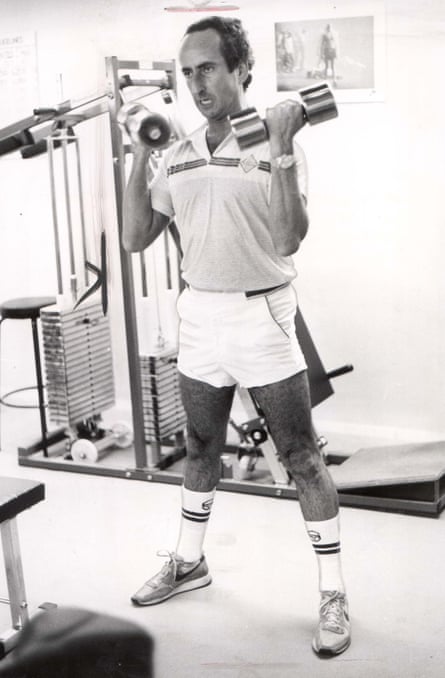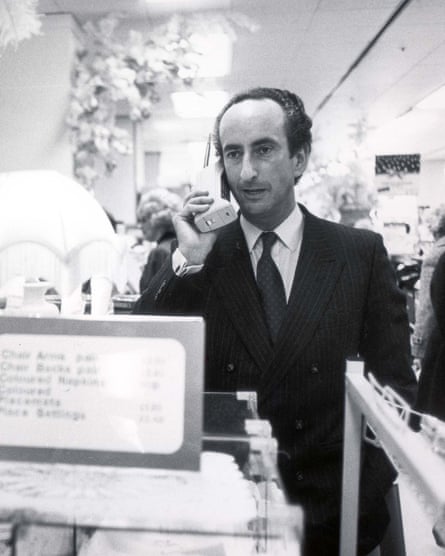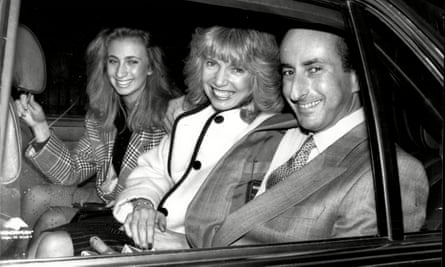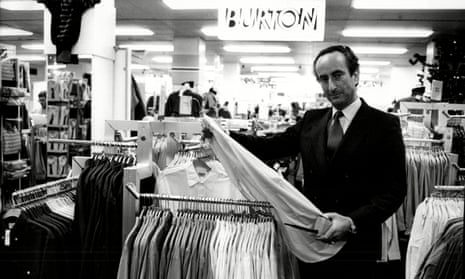Ralph Halpern, who has died aged 83, was the most flamboyant member of a group of retail and property tycoons who flourished, and then mostly fell, during the 1980s when Margaret Thatcher was prime minister. This was a remarkable period of British entrepreneurial endeavour, when a handful of talented, greedy and fearless businessmen changed the face of shopping in Britain.
His brands, Top Shop (which became Topshop), Principles, Top Man and several others within the Burton Group, became legendary in the industry. At its peak in the mid-80s, Burton Group was taking one pound in every eight spent on clothing in Britain – only Marks & Spencer could claim more. Yet, within a few years, the group had passed its apex – its share of the market was in decline and in 1990 Halpern was the victim of a boardroom coup.
In many ways, Halpern got what he deserved, both the good and the bad. He was variously feted or otherwise as the first British businessman to collect a £1m-plus pay packet, a keep-fit fanatic who had a £2m gymnasium built in the basement of Burton Group’s headquarters and, thanks to the kiss-and-tell stories of a model named Fiona Wright in 1987, a man with a voracious sexual appetite.
An inspired despot who, like so many of his peers, believed himself to be a genius, Halpern was a man with an exceptional feel for retailing. He rightly saw that the shops that would be most successful in parting young people from their money needed three ingredients: flair, theatre and value.

However, he was a flawed genius, for he courted danger, seemed obsessed with gaining the favours of young women and took short cuts with his accounts which, although legal, gave a somewhat inflated view of the real bottom line. In time, each of these flaws contributed to his humiliating, but profitable, ejection from the Burton Group, which he had transformed from a dull manufacturer of suits for the working man into one of the most famous retail chains of the era.
Halpern had dedicated most of his working life to the business, having joined Montague Burton, then run by Cyril Spencer, which made men’s suits in a string of factories in the north of England, in 1961. He steadily worked his way up the management ladder and, in 1970, co-founded Top Shop, a boutique-style chain aimed at teenagers and young women. It was Burton’s first venture into the high fashion industry, and was so successful that it was soon followed by other “stand-alone” chains.
Three years later, he acquired Dorothy Perkins. As the old suit factories were closed and sold, so the portfolio of brands operating under the Burton Group grew. Top Shop was followed by Top Man, while Evans was turned into a store for women of all sizes.
These were halcyon days for Halpern. His reputation both inside and outside the company was riding high and in 1977 he became group chief executive. Four years later he made it to the chairman’s office when he unseated Spencer.

In 1985, at the height of Thatcher’s reign, Halpern fought a bitter battle for control of Debenhams, a dowdy department store group. He teamed up with Sir Terence Conran, the designer and businessman behind Habitat, and the two of them starred in a video presentation sent to every Debenhams shareholder. The video showed how Debenhams could be brought into the 20th century, with glass escalators, atriums and retail excitement on every floor.
The bitter takeover brought him into contact with Gerald Ronson, a property developer who wanted a slice of the development potential inherent in the Debenhams portfolio; he played a crucial part in the success of the bid. It was said that Ronson was the only man Halpern feared, although it was never quite clear why. The share transactions that delivered Halpern his prize were later investigated by the Department of Trade and Industry, which found no evidence of wrongdoing.
During all this period, Burton Group was making use of a legitimate accounting device under which new outlets added to a retailer’s portfolio could “write off” a substantial proportion of their costs during the first year, rather than, as is usual, charge the costs against profits.
Sooner or later this was bound to catch up with reality and the true underlying profitability would be exposed. At the same time, Halpern plunged the Burton Group into property development, going ahead with shopping centre developments that were neither permanently financed nor fully pre-let.
By the late 80s, a number of institutional shareholders and City investment analysts were beginning to feel uneasy about the group’s financial situation. Halpern hated the City and made enemies of many in whose hands his future at the group was held. He believed that so long as he delivered rising profits and dividends, he should run the company as he pleased. But a generous share option scheme for him and his fellow directors was introduced at the wrong time, when the going was already getting tough and, although modified, left a chasm of distrust between Halpern and his shareholders.

Determined to the point of ruthlessness, his style was to ride roughshod over anyone who opposed him either within the company or outside, and his supposed visionary grasp of the fashion industry allowed him to get away with it.
Only days after the Fiona Wright story broke in the News of the World with claims that they had sex five times a night, Halpern was described by a Burton shareholder at the annual general meeting as the “second greatest Englishman, after Churchill”. Knighted in 1986, he travelled in the Burton Group’s private helicopter and made use of executive jets as others made use of trains. Wherever he went, he was accorded celebrity status.
After the kiss-and-tell exposure, the knives were out for the “five-times-a-night Burton boss”. Even then, however, it was said that he secretly enjoyed the notoriety, and still believed himself untouchable.
Born in London to Olga and Bernard Halpern, who had fled from Austria to escape the Nazis, Ralph grew up in Belsize Park and Hampstead, north London, and attended St Christopher school in Letchworth Garden City, Hertfordshire. After leaving he worked for his father’s textile firm before becoming a trainee at Selfridges, then joining Peter Robinson, part of Montague Burton.
For a man who had devoted nearly all his working life to the Burton Group (renamed Arcadia in 1998), his ejection nearly 30 years later was the bitterest of blows. However, Halpern had prepared well for his exit.
He had set up a pension scheme the contributions to which were based not just on his basic salary, but his total remuneration. Thus he left with an index-linked pension of more than £500,000-a-year for life. He was a somewhat nervous person, with bullet-proof glass in both his office and his car, and was more religious than he liked to let on, taking counsel from leading Jewish figures of the day.
There was also a kindly streak that ran through him. When one of his employees had a serious accident on group premises, he insisted on visiting the man’s wife to see what assistance she needed.
He retained links with the retail clothing industry for a few years as chair of the British Fashion Council, but he was never again to reach the heights that made him as well known to readers of the tabloids as to the business pages of the serious press.
His first marriage, to Joan Donkin, whom he had married in 1967 and with whom he had a daughter, Jenny, ended in divorce in 1999. He married Laura Blume, his former secretary and the mother of his son, Samuel, in 2003; they moved to Miami in 2005, and divorced two years later.
His children survive him.
